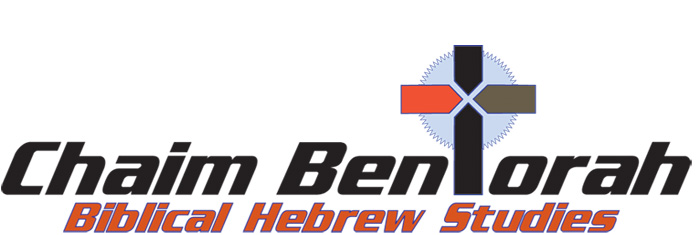Good Morning Yamin Ki Yesepar;
John 12:37: “But though He had performed so many signs before them, yet they were not believing in Him.”
I am not a student of the New Testament and I would not dare engage any of you in a debate with regard to a New Testament issue as I am certain to be bested if not outright embarrassed. However, I would like to ponder a New Testament question and if anyone has some insight to offer, I would appreciate hearing from you.
Why was it so hard for the Jews to accept Jesus as the Messiah. He fit Messianic prophecy perfectly, He performed miracles and travel extensively teaching deep insights into the Kingdom of God. Yet, as John 12:37 tells us, even though he performed many signs before them, they would not believe. Shoot man, even his disciples did not recognize him until their eyes were opened. In a moment of revelation at Caesarea Philippi, Peter suddenly saw the Light. “You are the Messiah of God!” Matthew 16:13-18. Jesus goes on to explain that it was only the Father in heaven who revealed this to Peter, not flesh and blood.
Perhaps one reason it was so difficult to see Jesus as the Messiah is that he fit so well into the Jewish community of his day. Many Christians are really shocked to discover that Jesus was not only Jewish, he was an orthodox Jew of his day. We seemed to have made Jesus a better Greek than a Jew. All the pictures we have of Jesus with his long hair and nice robes suggest He is more Greek than Jewish. As a result many areas of Christian teaching and practice have become distorted and sometimes non-biblical because we view the Scriptures through the eyes of Greek philosophy and not through Hebrew eyes and Hebrew mind.
Let me briefly tell you a little about this Jesus that I love, and that you also love.
He was born into a typical Jewish family. His father’s name was Joseph, the second most common name of that time for a Jewish male. Mary was the most common name for a Jewish female at that time. Jesus (Yeshua) was the fifth most common name of that time. The first being Simeon, then Joseph, Judah, John and then Jesus.
Jesus and his family were observant Jews. Jesus was a Nazarite from birth, which meant He was consecrated for a special ministry. He observed all the Jewish feasts such as Passover, Tabernacles and Hanukkah.
He was a rabbi and taught like a rabbi, by traveling from place to place depending upon the hospitality of the people and teaching in homes, villages and synagogues and even in the Temple. It was his status as a rabbi that gave him the right to kick out the money changers in the temple without temple guards stopping him.
He was orthodox and a master teacher fluent in oral and written Law. The Bible says he was born under the Law and never sinned (broke one point of law). He taught in parables like a rabbi and his parables are among the 4,000 that have survived in rabbinic literature. Like the Jews of that day he gave adherence to the rabbinic prohibition against uttering the Tetragrammaton (the divine name of God). Like other rabbis he substituted the name of God with the word “heaven” as in the Kingdom of Heaven.
His dress was that of a master teacher worn by observant Jews of the first century. He wore the tzitziyot, the tassels or fringes which hung from the four corners of the outer garment or robe of a first century Jew. His clothes were not expensive but unique as it declared to all who saw him to be a master teacher a sort of uniform or clerical garb. It was this special status of his clothes which led the Romans to cast lots for them
His method of teaching was strictly Jewish. Students in a Yeshiva study in pairs and argue an issue, while in the West we study in a student/listener/lecturer relationship which comes from the Roman/Greek world. He sat down as he taught in typical rabbinic style, he only stood when reading Torah. He answered questions in pure rabbinic style, ie., answering a question by asking a question. That is why the teachers were amazed at a 12 year old who could answer questions with such pointed questions. At 12 he was engaging in sophisticated rabbinic dialogue and everyone was astonished at his skill. Jesus also used the teaching technique of remez or hinting. It was assumed that his listeners knew the Holy Scriptures so well that a teacher had to only mention one or two words out of a passage or story and the listeners would know immediately what he was talking about (Good shepherd, pearl of great price etc). Because we are not as well versed in oral tradition and the Holy Scriptures as the Jews of that day, we are often confused by such sound bites in the New Testament.
Finally, (but not last as this is getting pretty long), Jesus belonged to a branch of Judaism know as Hasidim (not the present day Hasidim). The Hasidim of that day were noted for their emphasis on a supernatural healing and exorcism ministry. Galilee was a central location for the Hasidim and noted for it’s high standard of piety and learning which is why Jesus is often referred to as the man of Galilee. There is hardly any miracle recorded in the Bible for which a parallel might not be found in rabbinic literature.
So you see, Jesus really did not try to make himself stand out among the other rabbis of his day except his miracles were real and more than just healing bad backs and headaches which were standard fare for Hasidim healers. Still people expected a rabbinic Hasidim to perform healings, be a master of the Law and thus what made Jesus so special had to be revealed by the Father in heaven and not flesh and blood.
Yet, when Dr. Shmuel Safrai, a Jewish professor of Hebrew University was asked if Jesus was Hasid? He replied very pointedly: “No, He was Jesus – he was unique.”
Just remember, it is not flesh and blood that will reveal that Jesus is the Messiah, it is the Father in Heaven who reveals this to you. Have you thanked Him for this, the greatest revelation of all?







Recent Comments